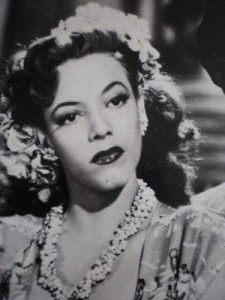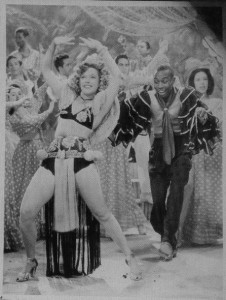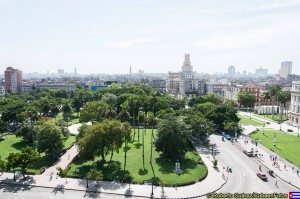 Amalia Rodriguez Carriera, better known as Amalia Aguilar, is a dancer, Mexican singer and actress of Cuban origin. Especially remembered for his starring role in the Film rumberas called the Golden Age of Mexican Cinema, and called “The Atomic Bomb” for some reviews of the time, because of her dancing.
Amalia Rodriguez Carriera, better known as Amalia Aguilar, is a dancer, Mexican singer and actress of Cuban origin. Especially remembered for his starring role in the Film rumberas called the Golden Age of Mexican Cinema, and called “The Atomic Bomb” for some reviews of the time, because of her dancing.
She was born on July 3, 1924 in Matanzas, Cuba. From childhood when she and her sister Cecilia were stimulated artistically by their parents. She studied ballet in Havana, with teachers Lita Enhart, Lalo Maura and George Harrison. He began his career dancing next to her sister Cecilia being almost a girl under the name of “The Aguilar sisters.” Loved were part of the Theatre Company Cuba. The Aguilar Sisters met in Havana to the famous Cuban dancer Julio Richard, who was looking for young figures bellet. Initially, Amalia was rejected by Richard due to his inexperience. After some years he went solo, because his sister got married when they were on tour in Panama and curiously July Richard, was the one who had the idea to take her to Mexico, calling the attention of producers and entrepreneurs because of their talent and beauty.
In Mexico, debuted at the Lyric Theatre and the main cabarets of Mexico City, as well as in the program XEW Hour Mejoral Carlos Amador. In the same year his first Pervertida tape filmed beside Ramon Armengod and Emilia Guiú. His success and fame soon drew the attention of the United States. Hollywood producers take her to act in some of the major nightclubs in the country.

Hollywood
During his stay in the United States, gets to work alongside the likes of Bob Hope, Carmen Miranda, Xavier Cugat and Lecuona Cuban Boys at the bar the athlete Joe DiMaggio (husband of Marilyn Monroe). In Hollywood films the tape A night in the Follies (1947). In Hollywood, they intended that Amalia will star in a movie film about the life of Lupe Vélez, but Amalia refused to work in the Hollywood industry and decided to return to Mexico.1
Mexico.
Back in Mexico, Amalia headed a group of musicians called The Diablos Tropics, and rejoined the Mexican cinema in 1948 with the film know both. Work with Pedro Infante say I’m a womanizer, and Germán Valdés “Tin Tan” in tender zucchini (Oh what nice legs!). Unlike his other colleagues rumba, Amalia arrabalero dramas rarely performed. Rather bent for comedy, performing exhilarating characters. The painter Jose Luis Cuevas said that Amalia is a “Tin Tan” femenino.
http://youtu.be/v4d_iFWNfWs
In all, 23 films Amalia filmed in just 10 years alongside figures such as Buster Keaton (Buddha Fang, 1949), Sara García (as Bride, 1949), Adalberto Martinez “springs” (Al son del mambo, 1950), Prudence Griffel (guests of the Marchioness, 1950), Elvira Quintana (widows of Cha Cha Cha, 1955) and Evangelina Elizondo (flying saucers, 1956), among others.
His most dramatic character is remembered in the film Lost Love (1951), alongside Víctor Junco. Special mention deserves its stake in musicals court feminist Three Merry Wives, The Stakeholder (1952), My Three Merry Widows and The Loving (1953), where famous dumbbell shape Lilia del Valle, Lilia Prado (in the first two ) and Silvia Pinal (the last two).

Retirement and recent years.
After marriage, Amalia retired from his film career. He resided several years in Peru, where he founded chain of beauty salons and taquerias. In 1976, he finally returned to Mexico for a season at Whitey musical theater with “springs” and Rosa Carmina. In 1981, returns to Peru and presents successful musicals Peru … I bring a son and Salsa Caliente.
In 2003, the Mexican film director Rafael Montero, convinces a brief appearance in the film Give me your body, starring actors Rafael Sánchez-Navarro and María Luz Zetina.
In 2010, Amalia is honored in the city of Miami, Florida, where his career was recognized and was awarded the Keys to the City from Mayor Tomas Regalado.

Personal Life.
She married the Peruvian businessman Raul Beraún. She retired from the film Industry when got pregnant and decided to devote herself to her children and marriage. Her husband dies in a plane crash in 1962, three children were procreated for both Raul, Manuel and Daphne.
Agencies / Various / InternetPhotos / YouTube / TheCubanHistory.com
The Cuban History, Hollywood.
Arnoldo Varona, Editor.













